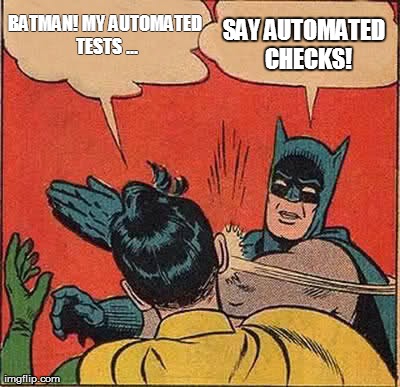Problem: “Manual testers” are often treated as second class citizens in the world of software.
I wrote a long post about the ideas of the leading testing minds and Qxf2’s own thoughts on solving the perception problem around “manual testing”. Turns out that 1800+ words of my writing is a poor way to capture attention. Since the problem is near and dear to my heart, I am summarizing two simple changes team Qxf2 has decided to adopt.
1. Use the words checking and testing correctly

We picked up this tip from this James Bach/Michael Bolton piece. I have been using the phrase “automated tests” on this blog and in various conversations. Going forward, I will use the phrase “automated checks”.
2. Avoid the phrase “manual testing”

We picked this tip from here. We have chosen to learn new words and substitute phrases. Based on our reading, here are a bunch of words and phrases worth thinking about: sapient process, broad stack testing, deep stack testing, full stack testing, late stage testing, early stage testing, automated checks, computer assisted testing. “Advanced Testing” works well for a chess lover like me. Use it if it suits you. If not, invent your own!
Hopefully you think deeply about the perception problem around “manual testing”, why the problem matters to you and what you can do to attack it. Happy thinking!
I want to find out what conditions produce remarkable software. A few years ago, I chose to work as the first professional tester at a startup. I successfully won credibility for testers and established a world-class team. I have lead the testing for early versions of multiple products. Today, I run Qxf2 Services. Qxf2 provides software testing services for startups. If you are interested in what Qxf2 offers or simply want to talk about testing, you can contact me at: [email protected]. I like testing, math, chess and dogs.

One thought on “%1$s”